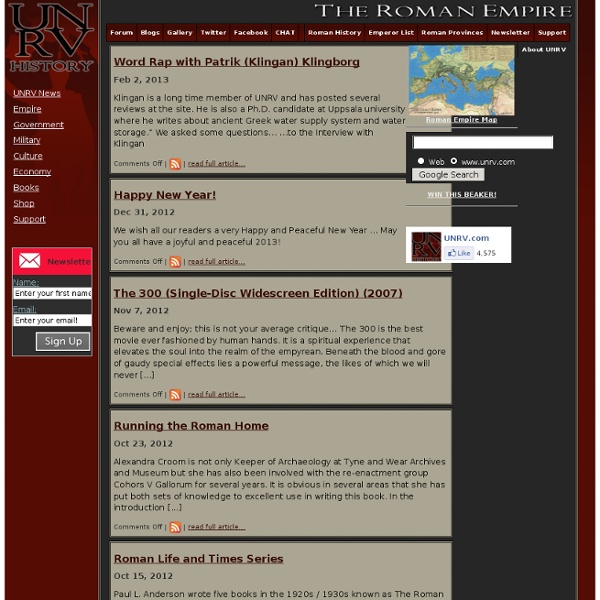



Ancient Rome — History.com Articles, Video, Pictures and Facts The decadence and incompetence of Commodus (180-192) brought the golden age of the Roman emperors to a disappointing end. His death at the hands of his own ministers sparked another period of civil war, from which Lucius Septimius Severus (193-211) emerged victorious. During the third century Rome suffered from a cycle of near-constant conflict. A total of 22 emperors took the throne, many of them meeting violent ends at the hands of the same soldiers who had propelled them to power. The reign of Diocletian (284-305) temporarily restored peace and prosperity in Rome, but at a high cost to the unity of the empire. The stability of this system suffered greatly after Diocletian and Maximian retired from office. Roman unity under Constantine proved illusory, and 30 years after his death the eastern and western empires were again divided. Access hundreds of hours of historical video, commercial free, with HISTORY Vault.
Ancient Roman History Timeline Provides a chronological index of the history of Ancient Rome with extensive links to internet resources. Emphasis is placed upon the use of primary source material, numismatics, and a focus upon the roles of women in ancient time. scroll down for the timeline Thank you for visiting! Timeline Menu Ridley Scott's GLADIATOR is a great film. Is it great history? Click here to learn the real story behind the events and characters portrayed in the movie. Kindly report any suggestions, problems, errors, or dead links by emailing david(at)exovedate.com Using info from this site? For detailed copyright information and bibliographic citation, click here contact the author by emailing david(at)exovedate.com (note: replace (at) with the @ symbol) Copyright © David Neelin: All Rights Reserved c. 2nd Millennium BCE || Archeological Remains Archeology reveals human remains, elk bones, bronze artifacts (rings, axes, etc.) c. 1st Millennium BCE || The Etruscans 753 BCE || Legendary Founding of Rome then later:
A Gateway to Ancient Rome William Smith's Dictionary of Greek and Roman Antiquities, an encyclopedic work containing a lot of good basic information (and references to primary sources), was published in 1875: it is thus an educational resource in the public domain. I've been putting a large selection of articles from it online, often as background material for other webpages. It is illustrated with its own woodcuts and some additional photographs of my own. Chariots and carriages, the theatre, circus and amphitheatre, roads, bridges, aqueducts, obelisks, timepieces, organs, hair curlers; marriage & children, slaves, dance, salt mines, and an awful lot more; among which special sections on law, religion, warfare, daily life, and clothing.